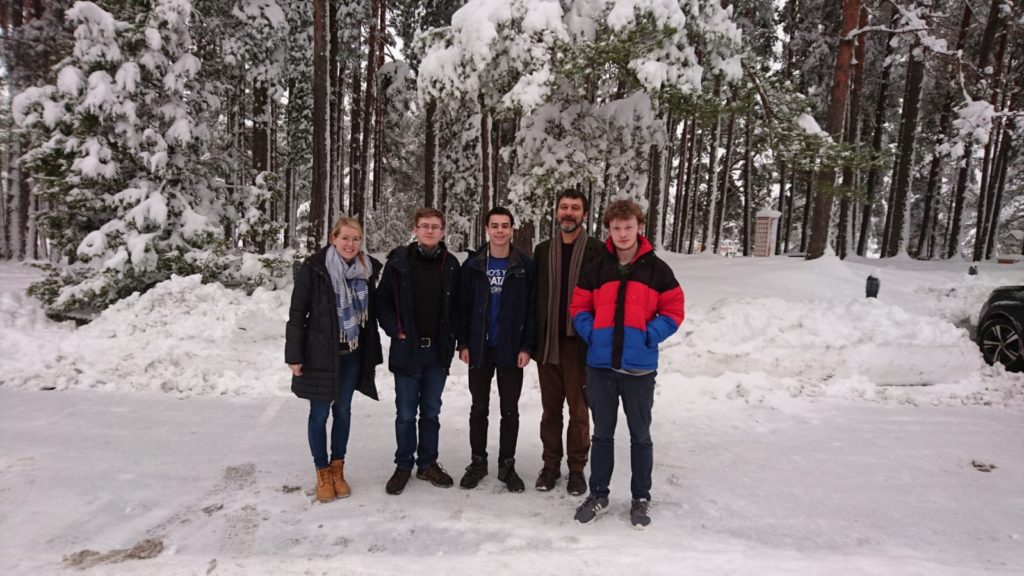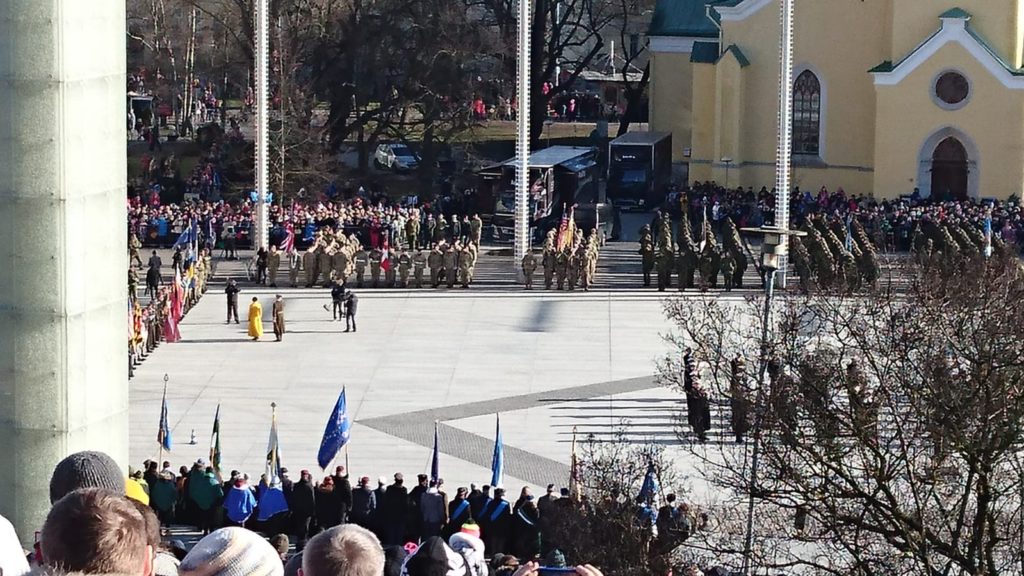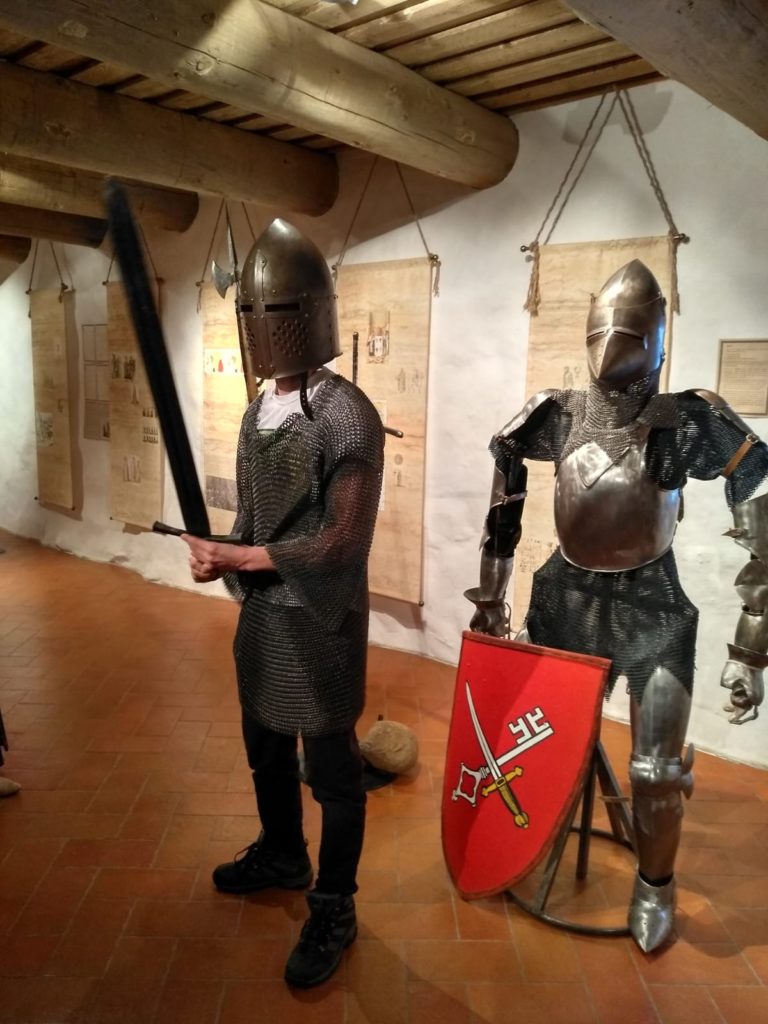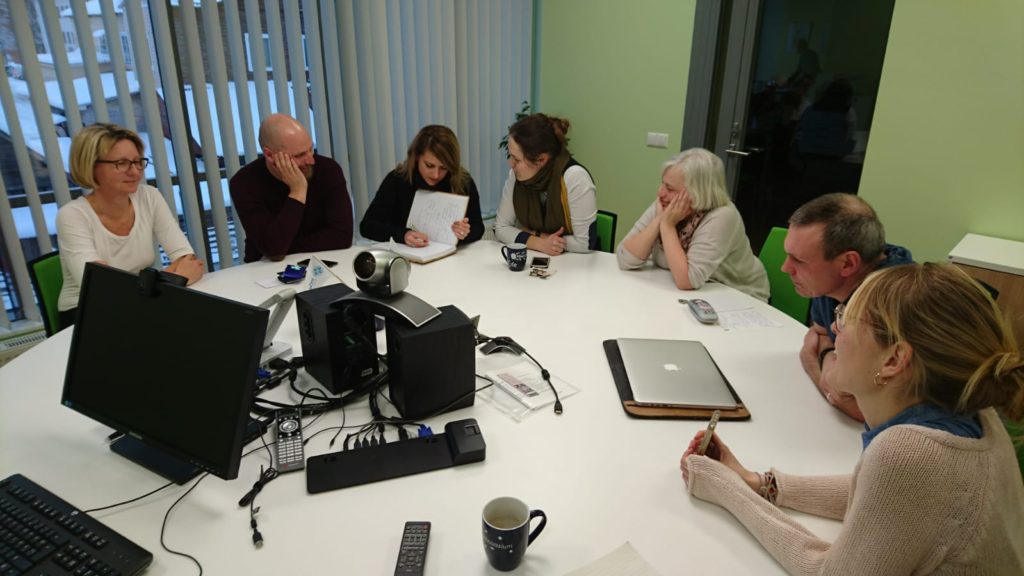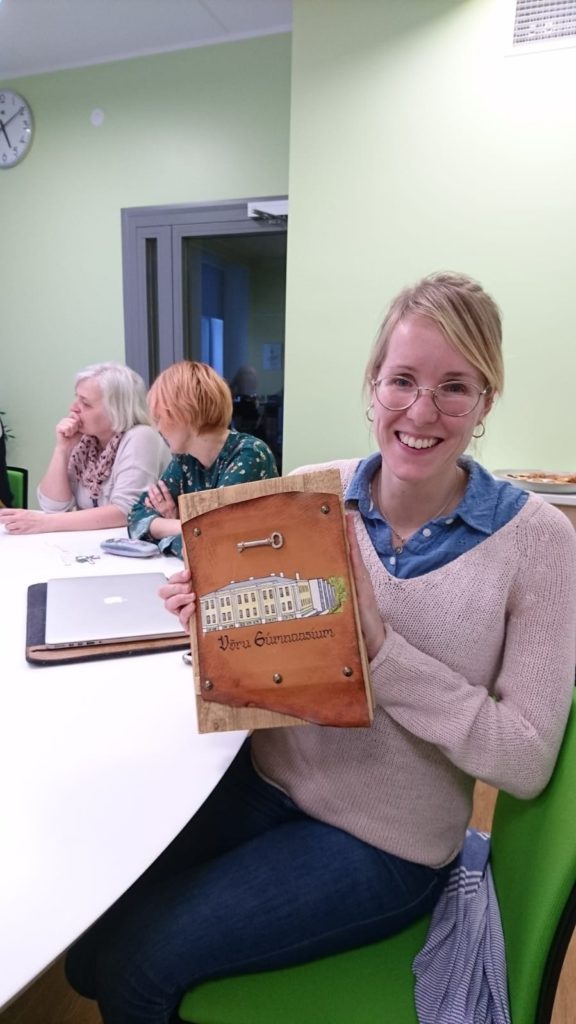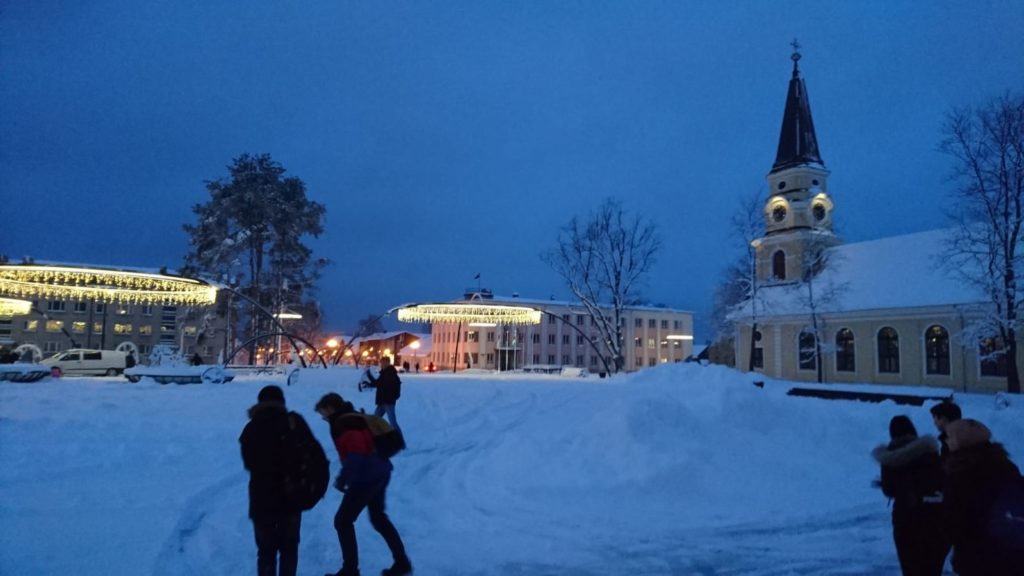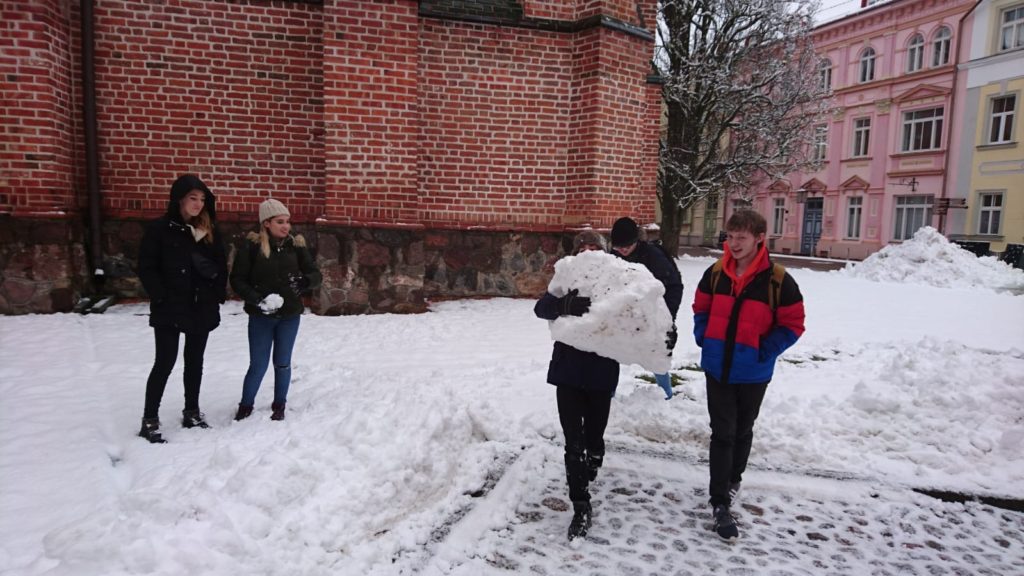On 23rd February our Erasmus Plus students, together with Herr Sundermann and Frau Sieber, travelled to Estonia for the second Mobility of our Erasmus Plus project where they met with their three partner schools. Below is a travel report from Mr. Sundermann.
Day 1:
After landing in Tallinn, we met the colleagues from the partner schools in Paderborn and Roldan, Murcia (Spain). In bright sunshine and temperatures between 2 and 3 degrees, we were guided through the old town of Tallinn by students from our host school, the Gümnaasium Võru.
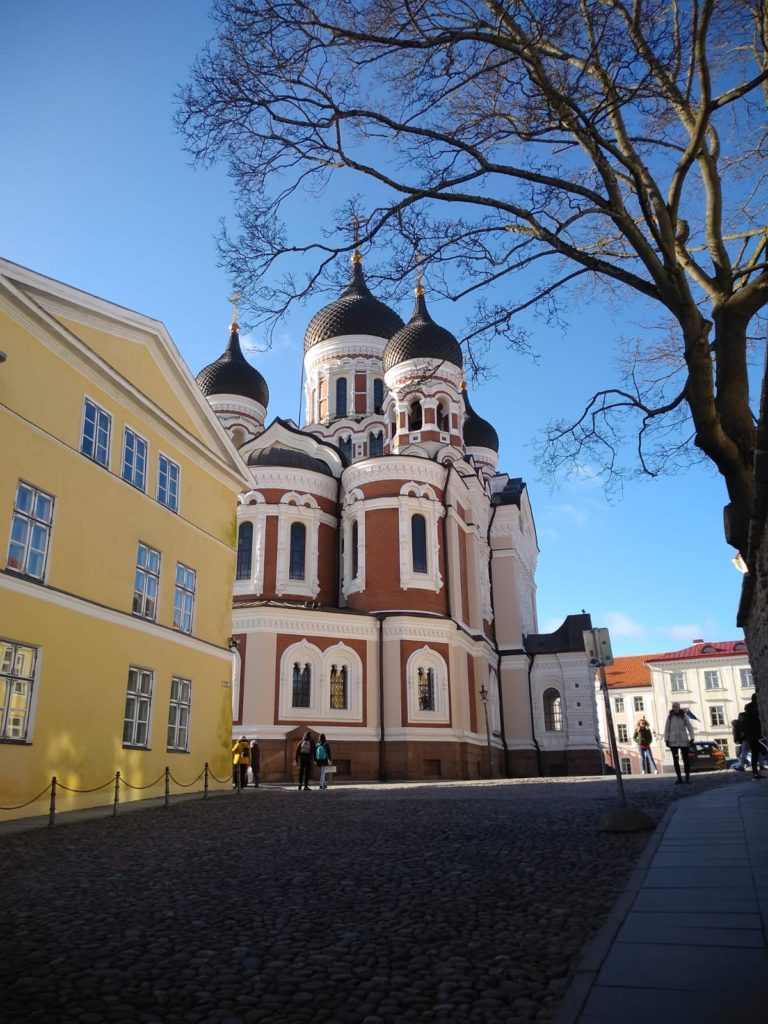
Orthodoxe Kathedrale 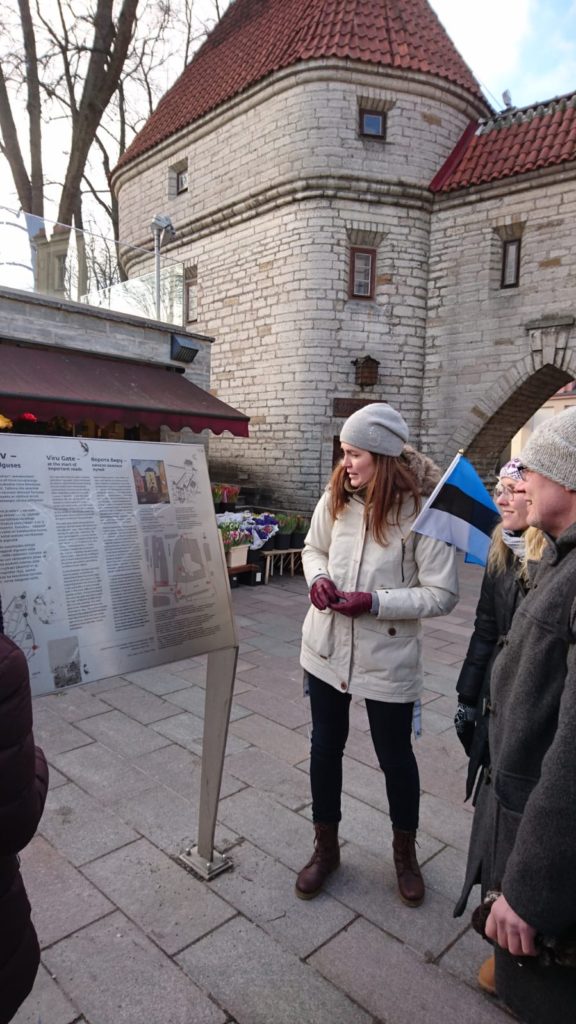
Tallinn: am Lehmtor, Eingang zur Altstadt 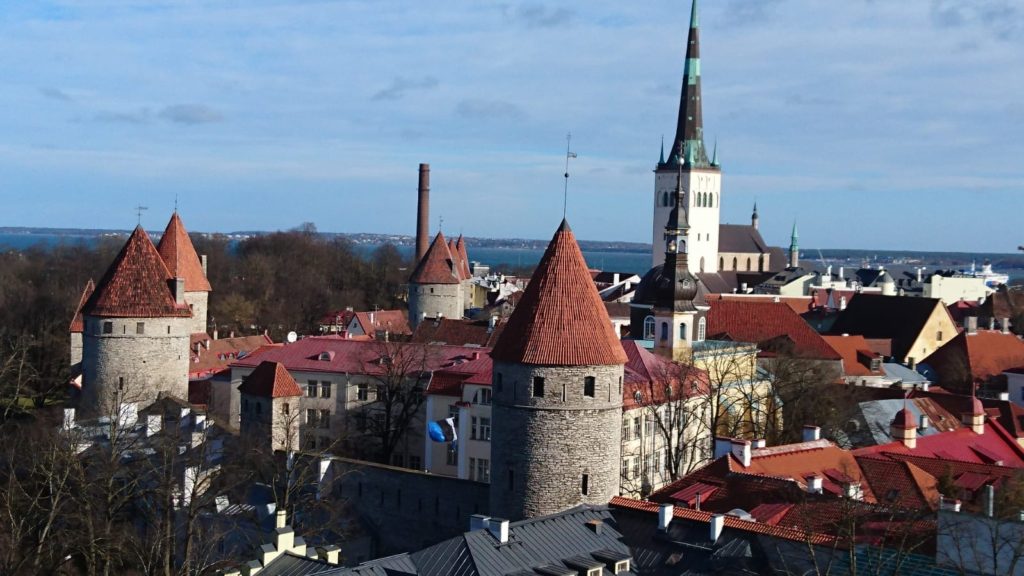
Tallinn: Blick auf Altstadt und Meer im Hintergrund 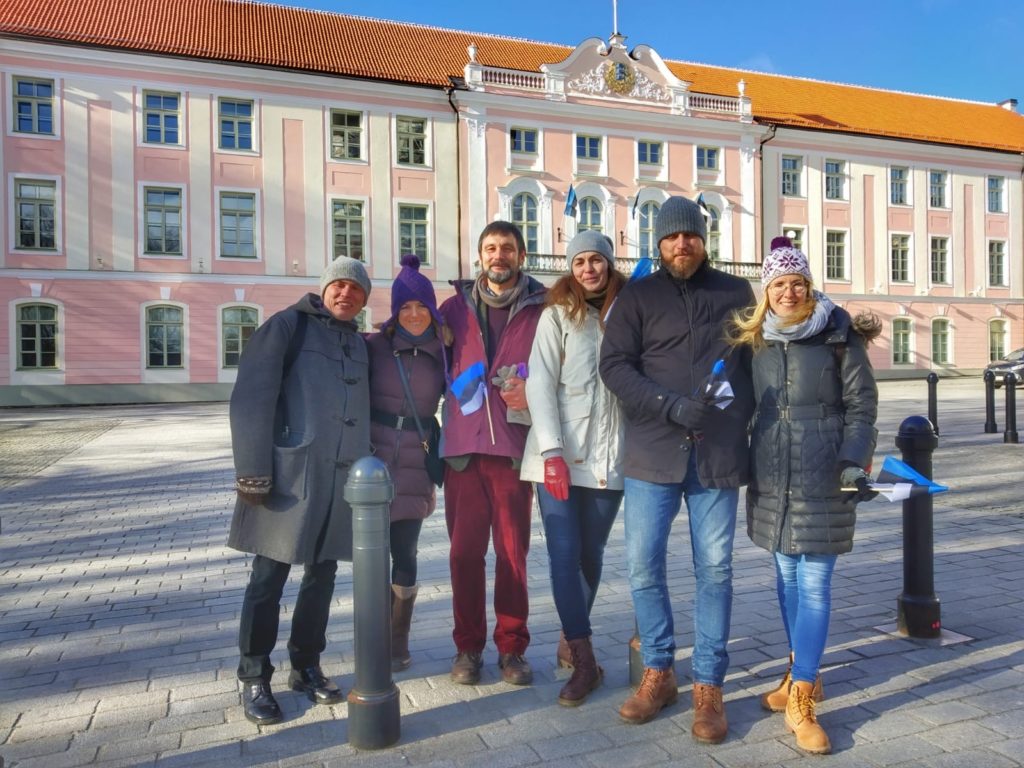
LehrerInnen der Partnerschulen
Day 2:
February 24th is the country’s national holiday or independence day and was celebrated in the city with a festive military parade. (A photo shows the Estonian President Kersti Kaljulaid in a yellow coat walking through the troops). Families, children and visitors with flags in the Estonian national colours blue, black and white were to be seen everywhere.
After lunch together at Vapiano, we embarked on the three-hour bus trip to Võru, located in the south-east of the country. En route we stopped at the impressive memorial for the victims of communist rule (1940 to 1991) on the outskirts of Tallinn. The bus tour led through a mostly flat landscape, interrupted by pine and birch forests. The Estonian students played folk music, but often in modern arrangements.
The day ended with a celebratory dinner at the Kubija Hotel in Võru, where the groups stayed during their stay in Estonia. After the meal, gifts were exchanged and interesting discussions were held.
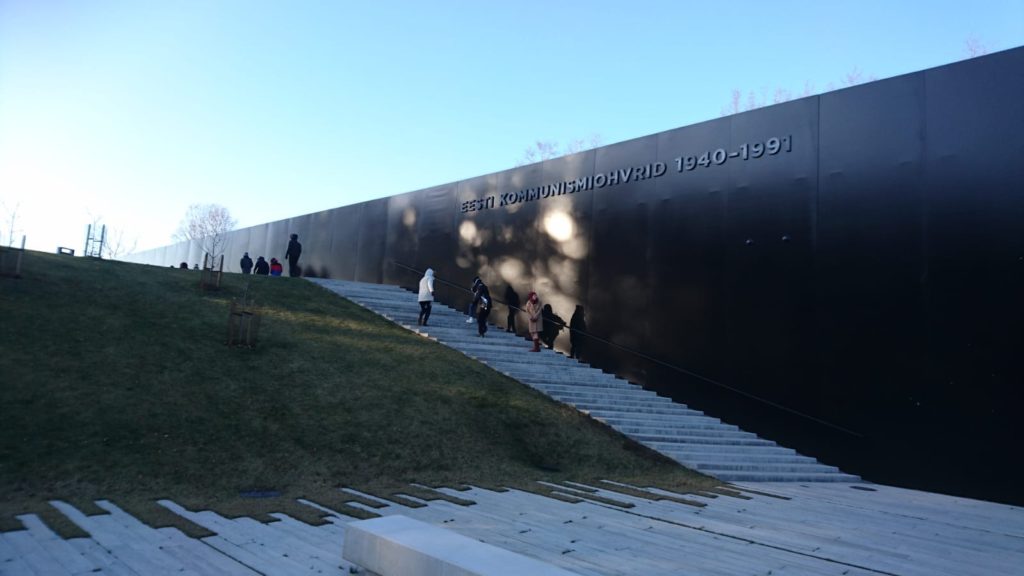
Gedenkstätte 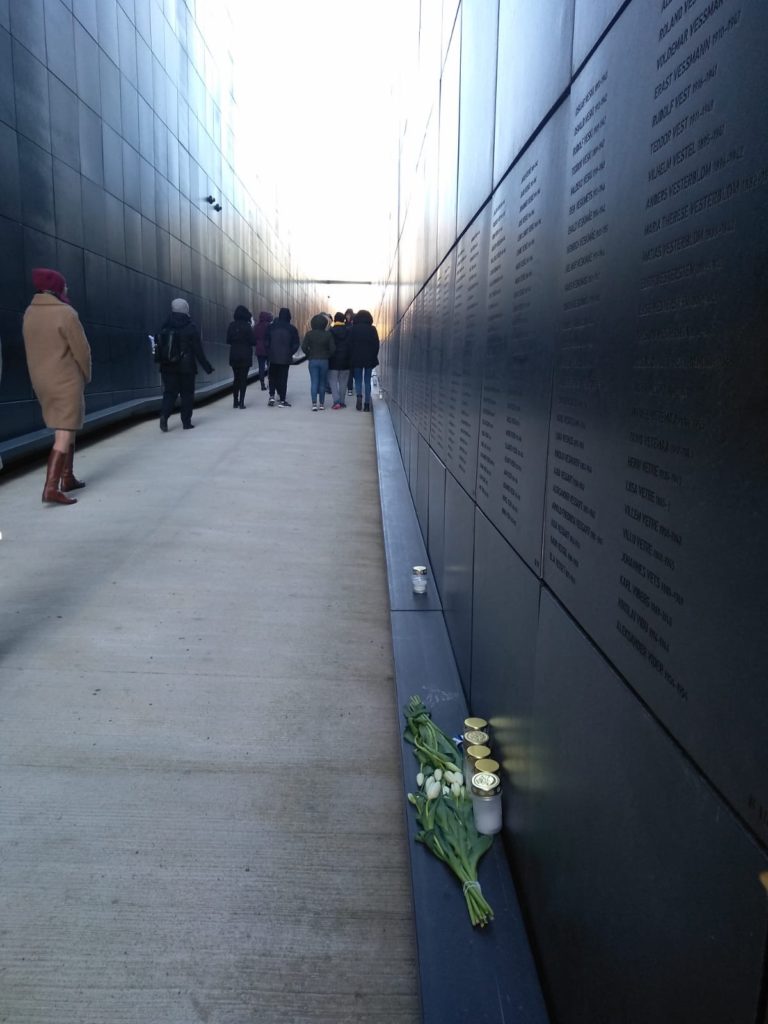
Gedenkstätte
Day 3:
On Tuesday we got to know and visit our impressive partner school, the Gümnaasium Võru. It is centrally located in the town on the market square and has beautiful, bright and modern rooms. The local tradition requires either slippers or socks only to be worn in the school building.
After a short city tour and dance and music performances at the highest level, there were presentations by the four participating schools on the topic ‘Every Picture tells a Story’. Important historical events in the country’s history and the relationship between the country and the EU were presented with the help of selected pictures and caricatures.
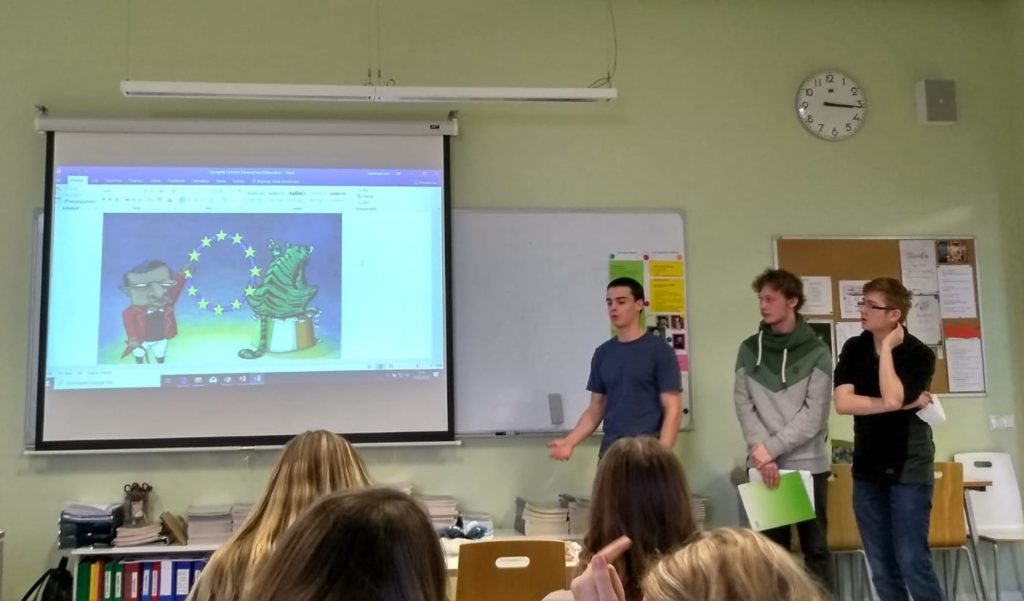
Präsentationen 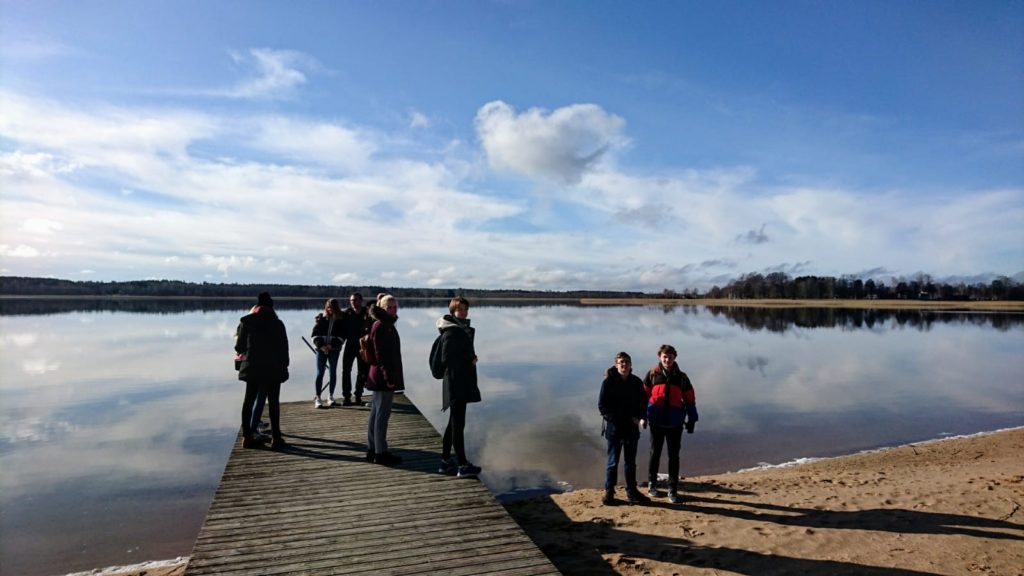
Beim Badesee in Võru 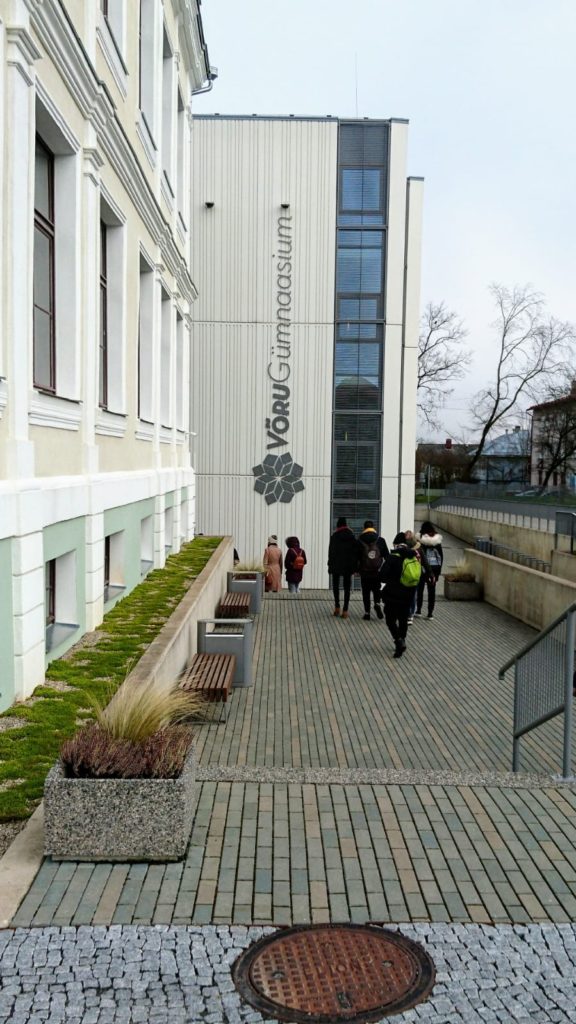
Unsere Partnerschule 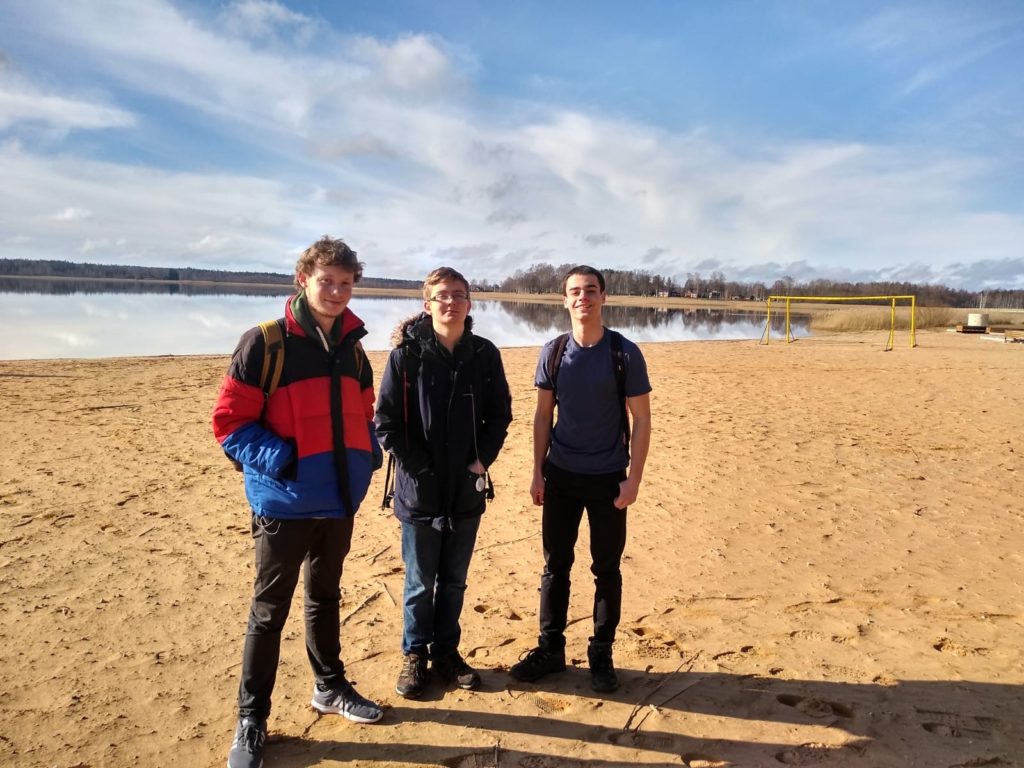
Badesee in Võru
Day 4:
The next day we made an excursion to the second largest city in the country, Tartu. We started early by bus to cover the distance of about 70 km. There had been a change of weather overnight and the landscape was now white after snowfall. In Tartu we were given a tour and learned about the eventful history of this lively university town. The snow and snowball fights kept everyone entertained. The subsequent visit to the KGB cells, however, was solemn and depressing. They are housed in the basement of an administration building and host an exhibition on the fate of Estonians under the rule of the Soviet Union from 1940 to 1991 and include documents of the forced deportations to Siberia during the Stalin era.
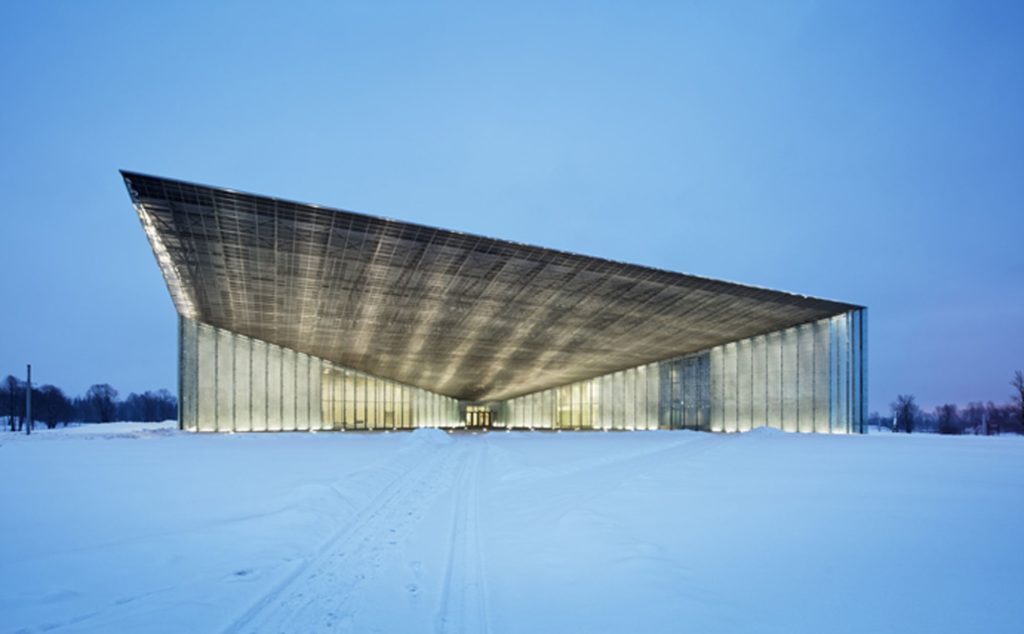
On the way back we stopped at the Estonian National Museum, where we were given a tour of this state-of-the-art museum with an exceptional architectural design. It presents the history of the country from the perspective of peasants, the ‘simple’ inhabitants of the country from the beginning to the present. We saw the desk chair and computer of the Estonian inventor of Skype, home-made lawnmowers from the Soviet era, when necessity was the mother of invention, and a well-preserved skeleton with grave inserts from an Estonian lady of noble origin. We were able to play in the linguistic department with a machine that reproduces the typical Estonian vowels and transforms patterns of textiles into musical compositions. The final part was the exhibit of the original Estonian flag from the 19th century, made by a student association and successfully hidden during the SU period.

Das Original der ersten estnischen Flagge 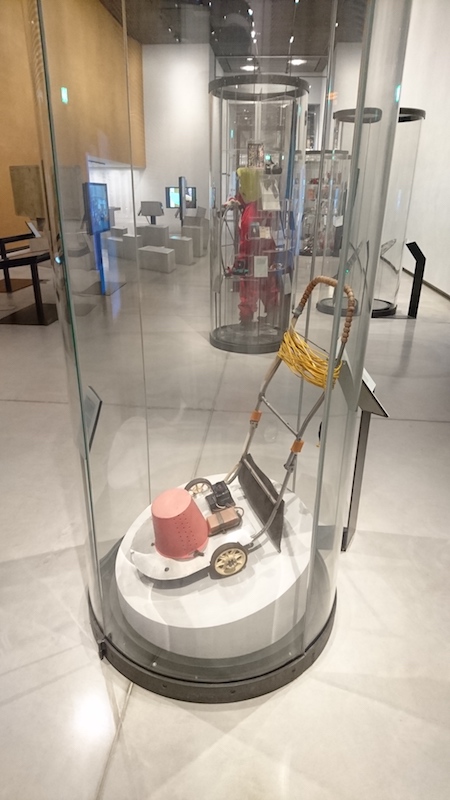
Selbstgebastelter Rasenmäher aus der Sovjet-Zeit
Day 5:
On Thursday, the last day of our stay, we had a guided tour of the Vastseliina castle and chapel: an important pilgrimage and pilgrimage site in the Middle Ages. In the meantime, the landscape had turned into a kind of ‘Winter Wonderland’ overnight and we were lucky to get to the sight and back without too much difficulty. In the afternoon, the students watched an award-winning film called ‘The Little Comrade’. It tells the story of a young family during the Stalin era in Estonia in the early 50s from the perspective of a 6-year-old child.
The Erasmus meeting ended with a final group work and presentations of the students on the topic of the project and an evaluation of the week. The teachers from the participating schools met and discussed the topic and dates for the next meeting in Roldan, Murcia, Spain in November. The participating schools made a small presentation of flowers and small gifts to the Estonian colleagues and their unprecedented commitment and hospitality.
Day 6: return journey!
